Are you a Quiet Speculation member?
If not, now is a perfect time to join up! Our powerful tools, breaking-news analysis, and exclusive Discord channel will make sure you stay up to date and ahead of the curve.
One of the biggest questions to come out of GP Charlotte was the viability of Grixis Control. Although Patrick Chapin piloted his deck to a 9th place finish, there were no other Grixis Control representatives in the Top 32, and the deck itself made up just 1.9% of the Day 2 metagame. Chapin is also an excellent player in his own right, so it was hard to separate his skill from the deck he was piloting. Then came GP Copenhagen. Thiago Rodrigues may not have won with his own Grixis Control list, but his fifth place finish showed the deck was still a force to be reckoned with. But it was really the Copenhagen Day 2 metagame that removed any remaining doubt, with Grixis Control standing as the single most-played deck (Twin only beat it out as a supergroup). Grixis Control is here to stay in Modern, and with it comes a renewed focus on a certain kind of control philosophy: proactive control.
Proactive control is not new to Modern, but the recent success of Grixis Control has forced Modern players to reevaluate the importance of proactive strategies in our format. In this article, I discuss the differences between reactive and proactive control, arguing that proactive control is the way of the future in Modern. This approach, and the underlying reactive vs. proactive philosophy, will be helpful to both control mages who want to improve their deck, or to the average Modern player who wants to prepare for the months ahead.
[wp_ad_camp_1]
Historic Definitions of "Control"
In my GP Copenhagen retrospective yesterday, I talked a bit about this idea of reactive and proactive control. This generated some interesting questions in the comments, on forums, and via email, not to mention all the discussion around the issue not related to my article. This really is one of the enduring questions in Modern, which motivated me to explore the issue in greater depth today. And as with many of the "enduring question" articles, I want to start by defining some terms.
Before we can discuss the meanings of "reactive" and "proactive", we really need to begin with a definition of "control". It's particularly important here because that definition is where we first find this tension between reactive/proactive. Back in 2014, Reid Duke wrote a series of articles defining different constructed archetypes. In his article on "Control Decks", Duke described three of their characteristics:
- "Control decks are geared for the long game"
- "Control decks focus on shutting down the opponent"
- "[Control decks] win the game later, at their own convenience"
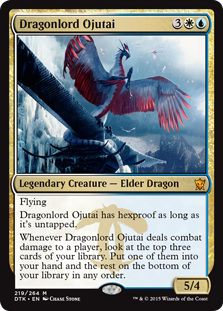 These definitions will ring true to most of us with constructed experience, especially those who played in the years before Modern (or played during many current Standard seasons). Control decks use countermagic, card draw, and removal to get to the late game. Then they win off some durable, efficient, but ultimately slow threat. This is the control archetype we remember from the days of Morphling and Psychatog, or even Dragonlord Ojuta from a more recent timeframe. But regardless of which old-school control we are looking at, we see the same theme through all the cards and in Duke's definition: "the long game". By its very nature, control is supposed to play for the marathon, not for the sprint. It doesn't try to win until the opponent is completely locked out of the game, and most of its cards are dedicated to establishing that sense of security. Moreover, its win conditions are at their best the longer the game goes. Playing Psychatog in turn 3 is a sure way to get the Atog killed. But play it on turn 12 after an Upheaval and with floating countermagic mana? That's the 30 year-old Scotch of control right there.
These definitions will ring true to most of us with constructed experience, especially those who played in the years before Modern (or played during many current Standard seasons). Control decks use countermagic, card draw, and removal to get to the late game. Then they win off some durable, efficient, but ultimately slow threat. This is the control archetype we remember from the days of Morphling and Psychatog, or even Dragonlord Ojuta from a more recent timeframe. But regardless of which old-school control we are looking at, we see the same theme through all the cards and in Duke's definition: "the long game". By its very nature, control is supposed to play for the marathon, not for the sprint. It doesn't try to win until the opponent is completely locked out of the game, and most of its cards are dedicated to establishing that sense of security. Moreover, its win conditions are at their best the longer the game goes. Playing Psychatog in turn 3 is a sure way to get the Atog killed. But play it on turn 12 after an Upheaval and with floating countermagic mana? That's the 30 year-old Scotch of control right there.
Reactive vs. Proactive Cards
It's this notion of the "long game" that creates the primary tension between reactive and proactive  elements, as well as reactive and proactive control decks more generally. By its very nature, control seems geared around "reactive" elements. As I define them, reactive elements (and, by extension, reactive control decks) seek to shut down opposing threats either after they are played (e.g. Terminate or Supreme Verdict, as they are played (e.g. Cryptic Command or Mana Leak), or even before they are played (e.g. Inquisition of Kozilek or Thoughtseize). The key here is not the timing of the card: in some sense of the word, discard is indeed "proactive" because it deals with a threat before that threat is deployed. Rather, the key is that reactive elements seek to answer threats, regardless of timing. In that sense, reactive elements are very much in line with Duke's points about control decks: they are focused on eliminating threats over the course of the game, not generating threats of their own.
elements, as well as reactive and proactive control decks more generally. By its very nature, control seems geared around "reactive" elements. As I define them, reactive elements (and, by extension, reactive control decks) seek to shut down opposing threats either after they are played (e.g. Terminate or Supreme Verdict, as they are played (e.g. Cryptic Command or Mana Leak), or even before they are played (e.g. Inquisition of Kozilek or Thoughtseize). The key here is not the timing of the card: in some sense of the word, discard is indeed "proactive" because it deals with a threat before that threat is deployed. Rather, the key is that reactive elements seek to answer threats, regardless of timing. In that sense, reactive elements are very much in line with Duke's points about control decks: they are focused on eliminating threats over the course of the game, not generating threats of their own.
Experienced control players will also note a second category of reactive elements, that of reactive threats. These are cards which win the game through either card advantage or damage, but can only be played when an opponent's own threats (and their answers to your threats) have been neutralized. Cards in this category include Elspeth, Sun's Champion and Celestial Colonnade. Sphinx's Revelation is another example of such a card, even if it doesn't directly win the game. These cards are not reactive in the sense that they answer a threat or address a dangerous board state. Rather, they are reactive in that they can only be safely played after your opponent's threats have been answered. This returns to Duke's point about control mages winning the game "at their own convenience", i.e. when the coast is clear. If you animate a Colonnade on turn 6 against your Twin opponent, you deserve to lose that game. Instead, you probably wait until turn 11 when you have mana for both Dispel and Cryptic Command.
That brings us to proactive elements and threats. Proactive elements are cards that develop your own 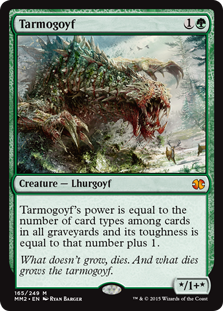 board state or gameplan, often cast at sorcery speed. Serum Visions is one of Modern's best proactive elements, but we can also find examples in cards like Farseek and Noble Hierarch. Proactive threats are cards that either put pressure and/or presence on the board (e.g. Tarmogoyf) or win the game outright (e.g. Scapeshift). This first category doesn't always have to be creatures. Vedalken Shackles is proactive, even if Kolaghan's Command has rendered the card unplayable. Blood Moon or Suppression Field can also fall in this category, especially if played against a deck that loses on the spot to either card. But for the most part, proactive threats take the form of a creature or a combo-win. Goyf may have been the go-to proactive threat of 2014 and earlier, but Tasigur, the Golden Fang and Gurmag Angler have been hogging the spotlight in more recent months. As for combo, it's all Twin all the time (with the occasional Scapeshift, as GP Copenhagen showed).
board state or gameplan, often cast at sorcery speed. Serum Visions is one of Modern's best proactive elements, but we can also find examples in cards like Farseek and Noble Hierarch. Proactive threats are cards that either put pressure and/or presence on the board (e.g. Tarmogoyf) or win the game outright (e.g. Scapeshift). This first category doesn't always have to be creatures. Vedalken Shackles is proactive, even if Kolaghan's Command has rendered the card unplayable. Blood Moon or Suppression Field can also fall in this category, especially if played against a deck that loses on the spot to either card. But for the most part, proactive threats take the form of a creature or a combo-win. Goyf may have been the go-to proactive threat of 2014 and earlier, but Tasigur, the Golden Fang and Gurmag Angler have been hogging the spotlight in more recent months. As for combo, it's all Twin all the time (with the occasional Scapeshift, as GP Copenhagen showed).
The big difference between proactive and reactive cards, especially proactive and reactive threats, is speed. Reactive threats are slow: you cast them late in the game after you can protect them and after an opponent is out of resources. Even if the reactive threat isn't that expensive (e.g. Psychatog), it's still played as an expensive, late-game card. Proactive threats are generally faster: you either cast these early and protect them, or you cast them as soon as possible if your opponent leaves an opening. Reactive threats obviously fit with control's historic focus on the long game. Proactive threats do not. Indeed, proactive threats are often associated with decks that either don't look like control or just aren't control at all. For years, UR Twin was branded as a combo deck, with Temur and Grixis Twin as tempo. The same was true of Scapeshift. Tarmogoyf was, at its slowest, a BGx midrange card. At its fastest, it was the workhorse of Zoo. Meanwhile, control mages were stuck on Esper Gifts, UWR Control, Cruel Control, and other overwhelmingly reactive strategies. Proactive threats seemed philosophically incompatible with these latter decks, and many Modern mages have taken this to heart in the years since.
The New Face of Modern Control
When Modern players look back on the history of control, they will view Fate Reforged as a turning point for the format's control decks. Although it took a few months and events for them to catch on, the delve creatures are the best thing to happen to Modern control since Snapcaster Mage. Snapcaster might still be the best card in control, and probably the best card in Modern, but without his delving friends, he wouldn't have viable control shells to empower. Here's Thiago Rodrigues's 5th place list from Copenhagen, a prime example of how control will look as Modern evolves:
Grixis Control, by Thiago Rodrigues (GP Copenhagen 2015, 5th place)
Rodrigues is by no means the first player to insert proactive threats into a predominantly reactive control shell. He's not even the first Grixis Control player to do it. But he was the highest-finishing Grixis Control player at Copenhagen, and it is Copenhagen more than any other event in the past few months that is going to put this proactive control on the map. As I mentioned in the article's opening, Grixis Control had a commanding 7.6% metagame share at the GP, a huge jump from Charlotte where it had a paltry 1.9%. This success is likely to incentivize more players to try out the lists and innovate their own, and we should expect to see lots of Grixis Control in the future.
Of course, the success of the archetype doesn't necessarily speak to those underlying tensions between proactive threats like Tasigur/Angler and a shell that is supposed to be reactive. Is it even fair to call this deck "Grixis Control" and not something like "Grixis Midrange" or "Grixis Tempo"? How can this deck be considered "control" when it's dropping a turn 2 Tasigur? Isn't that playline just too fast for a deck that is supposed to be playing "the long game"? These are all important questions to address, and common questions many control mages will ask. I want to start with the most important of the group: addressing whether or not this is actually a control deck. To do that, we need to return to our original definition of control that we borrowed from Duke's article.
Here are those initial three definitions again, this time applied to the Grixis Control list. With the exception of a single, bolded word in point #3, the definitions are unchanged. I also give a brief comment on how each definition is relevant to Grixis Control itself.
- "Control decks are geared for the long game"
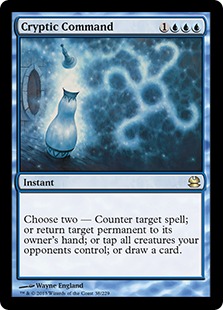 For many players, the key term in this definition is "long game". But that's actually not the most important term for me. That honor belongs to "geared", which suggests the option to go to the long game, but not necessarily the need to go to the long game. If a game does go long, Grixis Control is totally fine. It has both Commands along with Snapcaster to generate incredible value and card advantage, as well as more than enough answers to address all of an opponent's threats as they are played. But that doesn't mean Grixis Control is slavishly committed to that long game. It just has the tools to go long if needed. That should also be considered true of any Modern control deck, not just Grixis.
For many players, the key term in this definition is "long game". But that's actually not the most important term for me. That honor belongs to "geared", which suggests the option to go to the long game, but not necessarily the need to go to the long game. If a game does go long, Grixis Control is totally fine. It has both Commands along with Snapcaster to generate incredible value and card advantage, as well as more than enough answers to address all of an opponent's threats as they are played. But that doesn't mean Grixis Control is slavishly committed to that long game. It just has the tools to go long if needed. That should also be considered true of any Modern control deck, not just Grixis.
- "Control decks focus on shutting down the opponent"
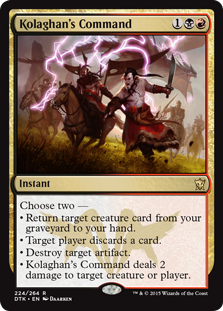 Grixis Control has five proactive threats (Tasigur/Angler) and two more reactive ones (Tar-Pit) to win the game. Compare that to the 22 ways it has of shutting down an opponent, which is actually at least 26 ways once you count in Snapcaster recursion (and more again when you consider Kolaghan's Command recursion of those Snapcasters). Just because Grixis Control players add in a handful of proactive threats, this doesn't mean the focus has shifted away from shutting down the opponent. Indeed, the overwhelming majority of cards in the deck couldn't be more focused on shutting down the opponent! Between countermagic, removal, bounce, and general board control, this deck is totally packed with shutdown mechanisms. The addition of five proactive threats doesn't detract from that focus: they are just supplements.
Grixis Control has five proactive threats (Tasigur/Angler) and two more reactive ones (Tar-Pit) to win the game. Compare that to the 22 ways it has of shutting down an opponent, which is actually at least 26 ways once you count in Snapcaster recursion (and more again when you consider Kolaghan's Command recursion of those Snapcasters). Just because Grixis Control players add in a handful of proactive threats, this doesn't mean the focus has shifted away from shutting down the opponent. Indeed, the overwhelming majority of cards in the deck couldn't be more focused on shutting down the opponent! Between countermagic, removal, bounce, and general board control, this deck is totally packed with shutdown mechanisms. The addition of five proactive threats doesn't detract from that focus: they are just supplements.
- "[Control decks] can win the game later, at their own convenience"
 This is the only definition I want to modify from Duke's original article. It's not that Grixis Control, or Modern control more generally, wins the game later. It's that it can win the game later if it needs to. In some sense, this follows directly from the first point about how control decks are "geared" for the late game. Being geared for the late game doesn't need to mean helplessness in the early game, or an inability to close out the game before turn 13. It just means that this deck doesn't automatically lose once you get past turn 6. Grixis Control is able to keep that option open while still maintaining a core strategy of late game gearing and the more reactive, answer-every-threat focus. It would be a different story if the proactive threats were themselves preventing you from shutting down opposing threats. But Tasigur and Angler are cheap enough that they avoid this issue: you can easily drop one of them with mana up to shutdown a threat next turn. That is the essence of control, and both Tasigur and Angler play into that nicely.
This is the only definition I want to modify from Duke's original article. It's not that Grixis Control, or Modern control more generally, wins the game later. It's that it can win the game later if it needs to. In some sense, this follows directly from the first point about how control decks are "geared" for the late game. Being geared for the late game doesn't need to mean helplessness in the early game, or an inability to close out the game before turn 13. It just means that this deck doesn't automatically lose once you get past turn 6. Grixis Control is able to keep that option open while still maintaining a core strategy of late game gearing and the more reactive, answer-every-threat focus. It would be a different story if the proactive threats were themselves preventing you from shutting down opposing threats. But Tasigur and Angler are cheap enough that they avoid this issue: you can easily drop one of them with mana up to shutdown a threat next turn. That is the essence of control, and both Tasigur and Angler play into that nicely.
It's this third point which transitions us to the importance of proactive threats in the predominantly reactive shell. When you are stuck with purely reactive threats and elements, it's basically impossible to have the option of winning before the late game. But if you can add those threats while preserving your other elements, the only thing you are doing is increasing your range. You aren't actually compromising the core values of your deck. Moreover, the proactive threats are actually a form of answer in their own right! A giant 5/5 body on the board is effective removal for all sorts of small creatures. At worst, it's a multi-turn Fog that buys the control player time. At best, even if not in the red zone itself, it's a multi-turn removal spell that either kills multiple creatures or eats other removal spells and mana. To some extent, you want to be careful with your proactive threats and how they interact with removal. Control gains virtual card advantage in blanking opposing removal, and every body you add reduces that gain. But because Angler and Tasigur are already blanking so many spells (Decay, Bolt, Kolaghan's, Electrolyze, etc.), they don't really suffer from this drawback.
Why Reactive At All?
Before I wrap up, I want to address a question I have heard about Modern control decks. Many authors, myself included, have talked about Modern being a proactive format. It rewards proactive plays, cards, and decks: this is not a format where you want to durdle around and wait for your opponent to punch through your defenses. Moreover, Modern is a format where threats are often better than answers. We lack Legacy's catchall powerhouses like Force of Will and Wasteland, instead relying on answers that can feel relatively narrow in metagames clogged with diverse threats. If proactive threats are the way to go, then why bother with reactive elements at all? Why not just go pure proactive and leave control in the past?
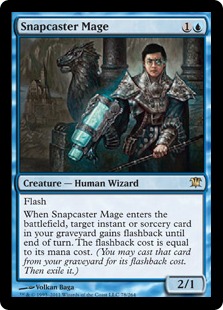 There are two reasons we shouldn't completely abandon reactive elements in favor of purely proactive strategies. The first is the, oftentimes ignored, power of our reactive cards. Snapcaster, Cryptic, Kolaghan's, Terminate, Remand: these are some of the most powerful cards in Modern, even if they don't have quite the same catchall strength as similar police cards in Legacy. But when paired with bullets like Dispel and Spell Snare, these reactive answers can completely take over a game and shut down an opponent (which is the essence of control). The key is in pairing the strongest control spells in the format (other examples include Verdict, Damnation, Clique, etc.) with some of the narrower ones to compensate for holes.
There are two reasons we shouldn't completely abandon reactive elements in favor of purely proactive strategies. The first is the, oftentimes ignored, power of our reactive cards. Snapcaster, Cryptic, Kolaghan's, Terminate, Remand: these are some of the most powerful cards in Modern, even if they don't have quite the same catchall strength as similar police cards in Legacy. But when paired with bullets like Dispel and Spell Snare, these reactive answers can completely take over a game and shut down an opponent (which is the essence of control). The key is in pairing the strongest control spells in the format (other examples include Verdict, Damnation, Clique, etc.) with some of the narrower ones to compensate for holes.
This leads us to the second reason for the continued relevance of reactive elements: Modern's diverse metagame. If you commit yourself to a purely reactive or linear plan, you are gambling that a) you are faster and more focused than your opponents, b) you are more resilient than your opponents, and c) your opponents are unprepared for you. If your gamble pays off then hey, welcome to your new Amulet Bloom overlords in the Top 8! But when that gamble is miscalculated, or you just run into bad matchup luck, you can easily flop out of the tournament before Day 1 is even over. The catchall, reactive suite of cards like Snapcaster and the Commands give you a tremendous degree of versatility in all matchups, both those you expect (e.g. UR Twin, Affinity, Jund), and those you just happen to run into (e.g. Lantern Control, Death and Taxes, Living End). Only a proper control deck can leverage these reactive answers, ideally alongside their proactive gameplan.
Hopefully this article both drives you towards the reactive/proactive control mixes, and encourages you to brew some of your own. Whether with the delve creatures, Goyf, or even old-school fallbacks like Bitterblossom or Geist of Saint-Traft, you can easily combine proactive threats into your reactive gameplan to win games in Modern. This is likely to be the new face of control going forward, so expect to either play it or beat it in the months to come.


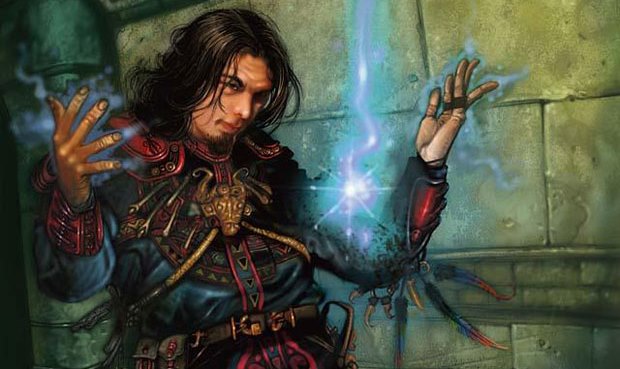



A very good article.
It captures the exact view that I always had on the matter and that I stated in multiple topics on the matter on MTGSalvation.
But apparently there are still people out there who think that the only Control decks are the ones which win on turn 30 with a single copy of Flying Men or something silly like that.
The mix of reactive and proactive elements(along with my love for black) is exactly what drew me to the BG/x decks in the first place after starting my Modern journey with UWR Control. I can grind people out with those decks. That’s what they are designed to do and what I like doing but I also have the ability to close out a game quickly if I have to and this new Grixis Control deck is taking the same approach on the matter but mixes it with the power of blue instead of green.
That’s a far better plan then sitting there with open mana all the time doing nothing until you can activate Celestial Colonnade with Cryptic Command backup. The results of hundreds of tournaments clearly show this.
Play to win and not play to not lose
First of all – I really like the deck and the philosophy behind it. But ist is NOT a control deck. The term proactive control is a paradoxon. proactive is jut another word for aggressiv and reactive for control. So by replacing one word its an aggro-control Deck. At the last to GPs we saw people dying against this Deck with seven Cards in Hand. We saw grixis control outracing most of the other Decks. For me this Deck plays more like a DELVER Deck. You try to land a threat eraly and protect it till opponent is dead. The threats dont die to Bolt an decay and lategame is better -thats the difference.
Not every Deck with Cryptic Command is a control deck.
Although I hear what you are saying about Delver having some similarities to control, that’s really not the case with Grixis Control. It really does fit all the criteria for a control deck as I outlined at a few points in the article. The only place where we could disagree is this distinction between WHEN control decks win. If people are willing to believe that control decks must win in the late game period, with no option at all to win in the early game, then I guess we have to agree to disagree. That would be like saying aggro decks have no way of winning in the late game because they must win early, which we know isn’t true. Just as aggro decks have late-game options, so too can control decks. In this case, Grixis Control fits not only all the control benchmarks, but also preserves an earlier win route than other control decks.
Thank you for your answer.
Your saying that killing early or be proactive early is just an option for this Deck. I think its the rule and controling your opponent out is an option. Let me explain this. Why do regular controldecks before disappered? There are a number of reasons but the most important one is the meta. Its full of linear Decks with different strategies. You needed to have the right answer at the right time – or lose. So why does this Deck survive? Has this Deck the answers the old Decks had not? No. Against most parts of the field this Decks changed the gameplan from control to tempo. In fact this Deck has less answers than controldecks before because u need the cantrips and the threats. This deck is only able to survive because its NOT control. This Deck can´t handle the linear decks for long. It needs an early clock + disruption. Thats about the same plan as delver and GBX. There are only a few match ups where grinding out is really the thing – most important GBX. U can see that real endgame (for a controldeck) is not important for the Deck if u look at the endgame cards (Command & Command). Both come down early (not like sphinxs rev for example). The synergies with snapcaster mage are just OPTIONS – you can also play bolt snap bolt. Playing a tempo game with an early threat (not dying to deacy and bolt) is what this deck makes so strong. Because of this its in the meta – not like the old control decks. Being proactive is the best and most important part of the deck – being control is just an option.
A few things on this.
1. It’s a bit of a misevaluation to count cantrips against threats, because cantrips both draw in to threats and also let you run fewer lands to run more threats. In the case of Scour, the cantrip is also instant-speed, which plays into the reactive draw-go plan that control decks are participating in.
2. You really can’t call a deck with just 5 delve threats a tempo deck. Tempo’s whole gameplan is to stick a threat on turns 1-3 and then run away with it . All historical Modern tempo decks run at LEAST 12 threats to ensure this consistency. This deck is running only 5. That clearly suggests a difference to me: this deck has no need to drop that early threat because it is geared for the long game and can shut down an opponent with its cards even if it’s not winning with a clock. You would never really play a tempo deck like Delver and then not play a threat until turn 6. This deck, however, is geared to do that, both in its construction (e.g. 5 creatures) and its philosophy and supporting cards (e.g. the draw-go, reactive control elements).
3. I firmly disagree that being proactive is the best and most important part of the deck. If that were true, Grixis Delver would be the Grixis deck of choice, something with way more early-game threats to ride to victory. But we don’t see that here, and yet Grixis Control is the Grixis deck getting all the playtime. This strongly points towards the control elements of the deck being the thing making this version strong, not the aggressive, tempo-oriented pieces in Delver.
Maybe I was unclear. Im not saying this is a tempodeck like delver. I just wanted to outline that these decks are similar. For me this deck is a tempo-control hybrid deck while the tempo plan is more important because of the mass of linear decks. Delver is not a good option right now because of the rise of grixis and jund decks bolt ist really everywhere. This deck is better than delver because of the interactive match ups.
Yes this deck is prepared for the long game but it doesnt solve the problems control had in the past with a control answer but with a tempo/proactive answer. If u are really able to shot down your opponent why wasting 5 slots on creatures wich cant control the board? Because u need a clock because your answers are limited and the meta is wide open.
Calling this deck a control deck is like calling tarmo twin or grixis twin combo decks. Yes they are combo decks somehow but if u want to understand how these deck work u are missing very much if u just say these decks are combo decks.
PS: Sry for my english and thank u for your answers.
No worries about your English! I totally hear what you are saying and get your points. I agree that Grixis Control and Delver decks (Grixis Delver, for example) do have some similarities. The biggest one is that they can both play a threat early and then commit to defending that threat for the rest of the game, which is a hallmark playline for tempo decks. But the key difference which, to me, separates the decks is what happens if this DOESN’T work out. If Delver doesn’t get its clock out, the deck falls apart. But Grixis Control is totally capable of playing a clockless game. This gets at the core characteristics of control, which include that idea of focusing on stopping your opponent’s gameplan. Grixis Control really is designed to do that, whereas Grixis Delver is more designed to protect its threats. Delver decks are also different from Grixis Control style control decks in the number of threats they run. Grixis Control is at 5 creatures and 2-3 manlands. Delver is running at least 12 creatures and no manlands. That threat imbalance alone is enough to keep the decks separate.
Great article and analysis. As a long time modern control player only recently dabbling in linear combo, I agree with this entire article. Perhaps I will try my hand with a Grixis control list at some point in the future.
How does Grixis count as Control while Jeskai Midrange does not? They both are geared for the long-game (Cryptic Command, manlands), they both focus on shutting down their opponents, and they both can win the game later at their own convenience.
I would argue that UWR Midrange is neither geared for the long game (it’s geared for the midgame) nor focused on shutting down its opponent (it’s focused on clearing the path for its own creatures to win the game). On the former point, the deck just has too many creatures and burn spells to really be geared for a long game. It might be ABLE to go to a long game, but that’s not how it’s built or geared. In that sense, UWR Midrange does probably pass the third criterion for control more than most decks would.
On the point of shutting down the opponent, that’s really not something UWR Midrange aspires to. It’s willfully running too many burn spells to do this, knowing that all those burn spells don’t really shut down a lot of creatures or strategies in this format. The deck is also not running enough countermagic options to have a gameplan that is truly reactive to an opponent’s gameplan. It’s running just enough to protect its own dudes (and, for burn spells, enough to clear a path and finish off an opponent), but the objective of those cards isn’t really to shut down everything an opponent does. They happen to shut down some things, but they a) don’t shut down enough and b) are only shutting things down incidentally to their main purpose of killing an opponent or clearing a path for stuff like Geist.
Can a deck like uwr flash have any success moving forward? I know alot of it boils down to restoration angel vs tasigar but flash does complicate my decision
My concern with UWR Control-style decks is that their threats just aren’t very good. One huge advantage of Tas/Angler is that they can interact with the board. You can’t just throw creatures at them, because the average creature in Modern either gets walled by them (Rhino, 4/5 Goyf) or dies outright (most everything else). But neither Angel nor Clique can do that, which makes them much better as clocks than they are as giant, recurring “answers” to an opponent’s creatures.
I really liked this article. It helped me, along with the comments, to sort out if my deck I’ve been brewing is control or midrange. While my deck can draw out games really long, it’s not because I’m answering threats, it’s because I don’t have enough to answer their threats and my threats can’t be answered and combine well with Worship. So I’m going to have to say Midrange.